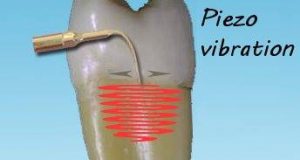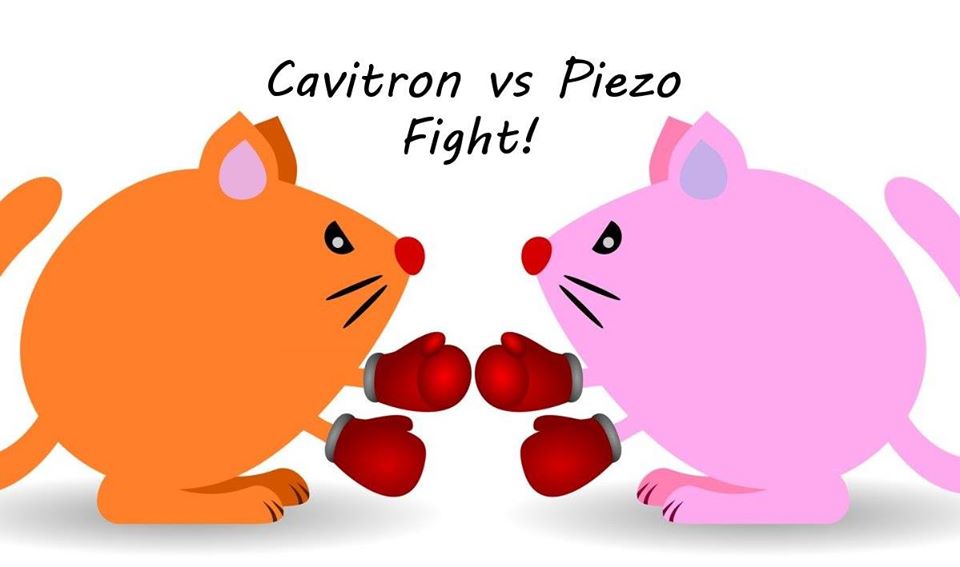The debate between piezo and cavitron is a classic, and they can both be great ultrasonics if you follow a few key principles:
Cavitron
The perception that the Cavitron is more powerful is a common one. And given the eliptical tip vibration pattern, you do have more active surfaces for debris removal. For initial therapy on a perio patient with big juicy chunks of calculus, you’ll probably have more fun blasting off those boulders with the Cavitron – and picking pieces out of your hair for days.
But remember you also have less control over directing the tip power. So if you’re not careful, this advantage comes at the cost of potential accidental damage to cementum and dentin.
This means if you’re diving down more than 5mm subgingivally with a Cavitron, it’s hard to judge exactly what the tip is doing. You know it’s probably removing calculus but it might also be pitting the root surface, so just keep that in mind. For a regular 6-month recall interval, a little bit of damage can add up over years.
Piezo
For those who feel the piezo feels like too much work, remember the vibration pattern and to keep the tip/shank parallel to the long axis and brush laterally (see diagram). For the average patient with mild to moderate calculus build-up, you’ll have plenty of power to efficiently remove all the deposits. And with a single plane of vibration, you know the direction of oscillation, even when down subgingivally, reducing the chance of root damage.

If you like all those active tip surfaces of the Cavitron, you’re going to wonder why the piezo doesn’t seem as effective in your hands. Remember that it only vibrates in one plane, so if you’re going to efficiently debride, you have to make sure your tip and shank orientation are angled to optimize the direction of the oscillation.
Summary
Both piezo and magnetostrictive (eg. Cavitron) can be effective if used correctly.
The Cavitron has more active surfaces and so is somewhat less technique sensitive when it comes to calculus removal. BUT it is more technique sensitive when it comes to minimizing root damage.
The Piezo takes a bit more attention to technique, but if used properly can remove calculus as effectively while allowing a little more control over the tip, especially in deep subgingival situations where visibility is limited.
PS: I found a pretty good YouTube video showing the Piezo technique, skip to 1:57s to see a good clear example.
Thanks for all of your comments and “Likes”! Also, please feel free to suggest a topic if there’s a subject you feel warrants a discussion for clarity.
Would you enjoy an adventurous, flexible professional lifestyle? TempStars helps you live your life on your terms.












